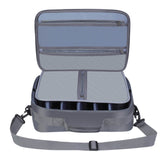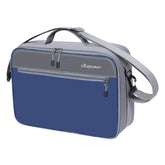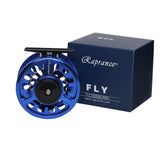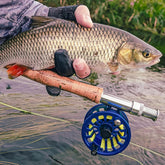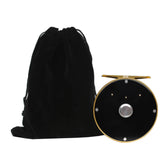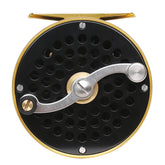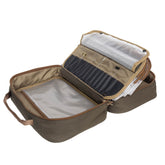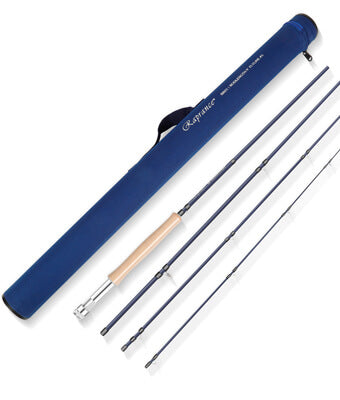Fly Line: A Comparative Review of Scientific Anglers, Orvis, Airflo, and Cortland Intermediate Options
When selecting the right fly line for intermediate fishing conditions, I find that the choice can significantly impact my success on the water. Understanding the unique features of brands like Scientific Anglers, Orvis, Airflo, and Cortland can help me determine which intermediate fly line will elevate my casting experience. Each of these companies offers options tailored to specific fishing styles and environments, making it crucial for me to choose wisely based on my needs.

The intermediate fly line is designed for anglers targeting fish at deeper water levels, allowing for efficient presentations. With its sink rate that is slower than full sinking lines, an intermediate line allows me to connect with fish that are suspended just below the surface. As I explore each of the brands, I aim to discover which line offers the balance of performance and ease of use that fits my casting style and the types of waters I frequent.
Comparing these lines reveals key differences in taper design, material, and intended use. By evaluating my preferences against the offerings of Scientific Anglers, Orvis, Airflo, and Cortland, I can make an informed decision that enhances my fly fishing experience.
Understanding Fly Lines

Fly lines are essential components of fly fishing, directly impacting casting performance and presentation of the fly. Different types of fly lines serve various fishing scenarios, and I emphasize the importance of choosing the right line for your conditions.
Types of Fly Lines
Fly lines can be categorized into several types, each designed for specific purposes. The main categories include:
- Floating Lines: These lines stay on the surface, ideal for top-water fishing and dry flies.
- Sinking Lines: They sink in water, perfect for reaching fish at deeper levels or for using nymphs.
- Intermediate Lines: These lines sink slowly, allowing for versatility between floating and sinking presentations.
In addition to these categories, manufacturers offer variations in taper and thickness, which impact casting distance and accuracy. Choosing the right type enhances my success in different fishing environments.
Role of Intermediate Fly Lines
Intermediate fly lines play a crucial role in versatility. They sink slowly, making them suitable for various fishing conditions, especially when targeting fish that feed below the surface.
The sink rate of intermediate lines typically ranges from 1 to 3 inches per second. This characteristic allows me to present flies effectively in different water columns without spooking fish.
Using an intermediate line, I can adapt my technique in changing conditions. For instance, on cloudy days or in heavy currents, an intermediate line helps maintain depth and ensures that my flies reach target zones without excessive resistance.
Comparative Analysis of Intermediate Fly Lines

I will evaluate four key brands of intermediate fly lines, focusing on their specific features, benefits, and suitability for different fishing conditions. Each offers unique characteristics that cater to various angler preferences and techniques.
Scientific Anglers Intermediate Options
Scientific Anglers provides a variety of intermediate fly lines designed for specific angling situations. Their Sharkskin series is notable for its textured surface, enhancing casting distance and accuracy. The Frequency Intermediate line offers excellent performance for freshwater applications, with a balanced taper for smooth presentation.
The integrated polymer coating helps to minimize water absorption, increasing durability. These lines are great for targeting species like bass and trout, particularly in still waters. Additionally, they boast a range of weights to accommodate various fly sizes and fishing styles.
Orvis Intermediate Selections
Orvis brings a solid lineup of intermediate fly lines that cater to different environments. The Hydros Intermediate line is a standout, featuring a sleek profile and a fine tip for better sinking rates. This is vital for getting flies down to fish efficiently.
The textured surface on some Orvis models also aids in casting and control. I appreciate their focus on using high-quality materials that resist abrasions and UV damage. These lines perform well in both freshwater and saltwater, making them versatile tools for any angler.
Airflo's Intermediate Innovations
Airflo offers intermediate fly lines that exemplify innovation in design. Their 3D and Super-Dri ranges are engineered for long-lasting performance, utilizing polyurethane coatings for water resistance. This means minimal sinking and improved handling in various conditions.
Each line incorporates specific tapers for improved casting efficiency and distance. Airflo's lines excel in colder water, where their ability to maintain flexibility is crucial. The color coding aids in easy identification, helping me choose the right line quickly during a fishing trip.
Cortland Intermediate Variations
Cortland produces a diverse range of intermediate fly lines suited for numerous situations. Their Camo Intermediate line employs a unique pattern, reducing visibility in the water, which can be advantageous when targeting wary fish.
The “Liquid Crystal” technology provides a smooth casting experience, while the lines are designed to sink at a consistent rate. Cortland also emphasizes durability, using materials that withstand the rigors of regular use. Their intermediate lines are well-suited for lake fishing and offer excellent performance in various freshwater applications.
Selecting the Perfect Fly Reel and Line Combination
Choosing the right combination of fly reel and intermediate line is crucial for effective casting and retrieval. This selection impacts performance, control, and ultimately the success of your fly fishing experience. I focus on specific reel types and line pairs to ensure optimal functionality on the water.
Matching Fly Reels with Intermediate Lines
When matching fly reels to intermediate lines, I consider the line weight and the intended fishing environment. For instance, if using a 5-weight intermediate line, I prefer reels like the Redington 2/3 CT for lighter applications or the Lamson LP-1 for a more robust setup.
It's also important to look at the drag system. A reel like the Galvan Brookie offers a smooth drag for delicate presentations. In contrast, the Abel Big Game provides superior strength when targeting larger species.
Weight distribution is another factor. A well-balanced setup, such as pairing a Bauer JM1 reel with the Orvis intermediate fly line, enhances casting accuracy.
Recommended Intermediate Line Reel Pairings
Here are some ideal combinations for intermediate lines and reels:
| Intermediate Line | Recommended Reel |
|---|---|
| Scientific Anglers Intermediate | Hardy Featherweight |
| Orvis Intermediate | Sage Spectrum LT |
| Airflo Intermediate | Waterworks ULA |
| Cortland Intermediate | Cortland Embassy |
The Scientific Anglers Intermediate line works excellently with the Hardy Featherweight, providing a lightweight setup. The Orvis Intermediate pairs seamlessly with the Sage Spectrum LT, offering a reliable drag system.
For durability, I find the Airflo Intermediate line complements the Fin-Nor reels. Lastly, the Cortland Intermediate line is a great match for the Ross Rhythm, creating a balance of performance and responsiveness.

